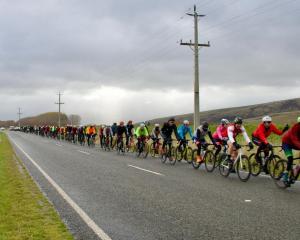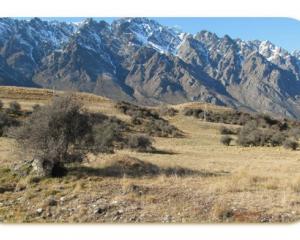Landcare Research is confident it has found a way to kill just as many rabbits per hectare as current methods but using two-thirds less 1080 poison, and at half the cost.
At a conference of high-country farmers in Wanaka last week, Landcare scientist Dr Dave Latham outlined the results of trials conducted on two high-country stations near Wanaka and Tarras last winter.
Dr Latham said the trials were designed to refine the way bait was sown on rabbit-affected country by fixed-wing aircraft.
Five different experiments were undertaken, manipulating the amount of toxic bait sown and the amount of non-toxic "pre-feeds".
"In essence, with the toxic bait, we've reduced that from 30kg per hectare down to 10kg per hectare."
And, he said, there was no statistical difference in effectiveness between the experiments and current practice, with an estimated kill rate of 90% in each case.
"So that's the most important take-home message. Our experimental treatments are as effective as current practice."
As well as reducing the amount of bait used, the trials investigated ways of reducing costs.
They did this by spreading bait, by air, in strips up to 75m apart rather than broadcasting it by air, as at present.
Costs - usually up to $100 per hectare - were reduced by half.
"There are minor savings associated with the reduction in carrot bait and to a lesser extent the amount of 1080 used, but those are reasonably modest savings.
"The majority of the bang for the buck comes from the reduction in flight-time itself.
"If you have lines that are being flown at 75m instead of 25m then you are reducing your costs quite considerably with regards to that fixed-wing time."
The trials were done in conjunction with the Otago Regional Council and Dr Latham said while the council was "a little bit leery" about the treatments last year, it had been convinced.
"They have been quite impressed with some of the ones we have done and they believe they should be considered as effective as the current practice and they should start to be offered to landowners as a viable control technique now.
"Based on last year's results I think we are all very convinced it worked well.
"We do not see that there is anything that we have done that does not work as well as current practice, yet it's all cheaper and it sows less toxic bait."
Dr Latham expected some resistance from those carrying out rabbit control, not least aircraft operators who might have issues over how worthwhile it was to undertake the reduced amount of flying per hectare.
"A fixed-wing company still needs to make a living, so if we reduce the amount of flight-time too much, so that a job then becomes not really worth their while, then they might not be inclined to want to do it."
Also, those involved in rabbit control work would have to change to a new best practice and "I think there is going to be some resistance there, probably from some of them simply because it upsets their routines et cetera.
"There are going to be a few social and political-type hurdles to overcome but that is to be expected in this type of thing."












